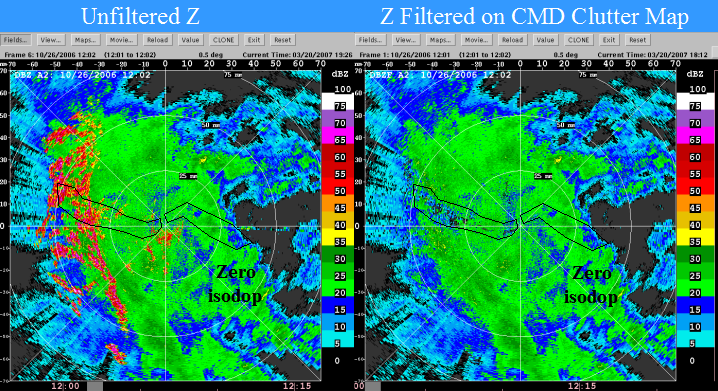The NEXRAD Data Quality Program, funded by the National Weather Service's (NWS) Radar Operations Center (ROC), provides scientific and engineering expertise to enhance NEXRAD (NEX- generation RADar) data quality, focusing on three areas:
- Range and velocity ambiguity mitigation.
- Anomalous propagation ground clutter mitigation with minimal impact on weather echoes.
- Radar calibration, specifically differential reflectivity.
"NEXRAD is used to warn the people of the United States about dangerous weather and its location. Meteorologists can now warn the public to take shelter with more notice than with any previous radar. There are 158 operational NEXRAD radar systems deployed throughout the United States and at selected overseas locations. The NEXRAD network provides significant improvements in severe weather and flash flood warnings, air traffic safety, flow control for air traffic, resource protection at military bases, and management of water, agriculture, forest, and snow removal."
Time-series and Archive II data are used extensively by the EOL NEXRAD research group. These data sources include numerous operational NEXRADs around the country, the National Severe Storms Laboratory (NSSL) research and development NEXRAD radar (KOUN), and S-Pol.
